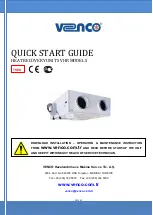
Transfer Criteria for the VANDER-LIFT II
TM
B600
3) The Patient Must:
a) Have no injuries or medical conditions that might be aggravated by the VANDER-LIFT
II™ transfer procedure
b) Weigh less than 600 pounds
4) The Patient May:
a) Be non-weight bearing or unpredictably able to bear weight in his or her legs
b) Be unable to follow simple directions
c) Be seated or lying on the floor
d) Have loose muscles with little tone
e) Have a single or double leg amputations
f) Use an abduction pillow between the knees during transfers
g) Have unpredictable, resistive, or combative behavior
as long as the patient has
been assessed first for the appropriate type of sling, for the safest method of
connecting the sling to the hanger bar hooks, and as long as enough staff members
are present to prevent the patient from injuring himself, herself or the staff.
WARNING
Before using the VANDER-LIFT II™ B600, patients must be assessed by the facility's
professional nursing or professional rehabilitation staff to determine which patients are
suitable for transfer with the VANDER-LIFT II™ B600, which VANDER-LIFT II™ transfer
technique to use, which size sling is appropriate, and the number of staff members
necessary to transfer each patient.
WARNING
Although one person can perform patient transfers, certain patients or situations may
require the help of one or more additional staff members. For example, patients with
unpredictable behavior due to dementia may require additional help if their behavior
poses risk of injury to themselves or to staff members, patients being transported in the
VANDER-LIFT II™ with a VANDERSCALE outside of the patient’s room.
The above information must be recorded in the patient’s record and must be
communicated to the staff.
9
November 2017
For your nearest Distributor call, 1-800-694-4525
9











































